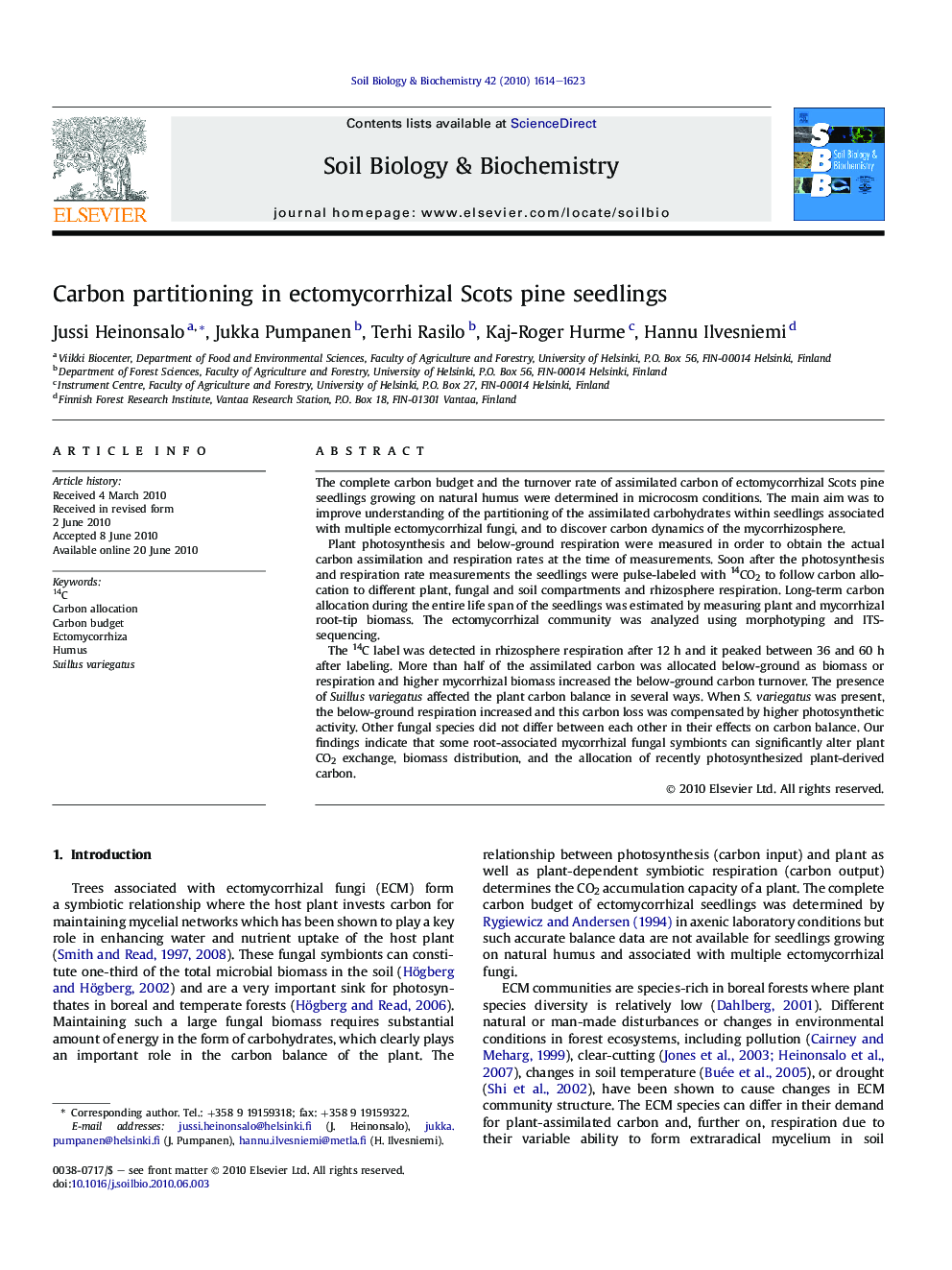| Article ID | Journal | Published Year | Pages | File Type |
|---|---|---|---|---|
| 10846132 | Soil Biology and Biochemistry | 2010 | 10 Pages |
Abstract
The 14C label was detected in rhizosphere respiration after 12Â h and it peaked between 36 and 60Â h after labeling. More than half of the assimilated carbon was allocated below-ground as biomass or respiration and higher mycorrhizal biomass increased the below-ground carbon turnover. The presence of Suillus variegatus affected the plant carbon balance in several ways. When S. variegatus was present, the below-ground respiration increased and this carbon loss was compensated by higher photosynthetic activity. Other fungal species did not differ between each other in their effects on carbon balance. Our findings indicate that some root-associated mycorrhizal fungal symbionts can significantly alter plant CO2 exchange, biomass distribution, and the allocation of recently photosynthesized plant-derived carbon.
Related Topics
Life Sciences
Agricultural and Biological Sciences
Soil Science
Authors
Jussi Heinonsalo, Jukka Pumpanen, Terhi Rasilo, Kaj-Roger Hurme, Hannu Ilvesniemi,
